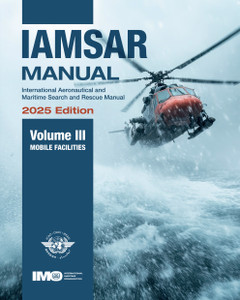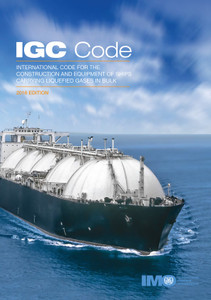
Port Reception Facilities: How to Do It, 2016 Edition (IB597E)
This manual provides practical information to governments and Port Authorities, as well as the shipping industry, agencies and waste contractors seeking guidance when implementing MARPOL. It also provides guidance on how to deal with possible inadequacies, as a party State must ensure the provision of adequate port reception facilities to meet the needs of ships using their ports, without causing undue delay to the ships.
The manual has been prepared bearing in mind that action will be required at different government and port operation levels, and the role of each entity may be different. It also recognises that in some parts of the world there will be bilateral or multilateral arrangements that relate to the provision of port reception facilities and waste management.
The development of the first Comprehensive Manual on Port Reception Facilities was agreed at the thirty-second session of the Marine Environment Protection Committee (MEPC) of the International Maritime Organization (IMO) in March 1992. A working group on Port Reception Facilities was established to draft a comprehensive manual on the provision of adequate port reception facilities, and the Manual was approved by MEPC 35 in March 1994, and published in 1995.
This 2016 edition not only contains updates to the regulatory framework and several waste management methods, but it also broadens the scope of the original manual. The revised manual is no longer limited to guidance regarding the provision of port reception facilities for MARPOL wastes/residues (Annexes I, II, IV, V and VI), it also provides practical guidance relating to the management of other ship generated waste/residue streams such as ballast water sediments and waste from the application or removal of anti-fouling systems controlled in Annex 1 of the AFS Convention. Also, the title of this manual has been amended to Port Reception Facilities – How to do it.
The manual still provides practical information to governments and Port Authorities, in particular those in developing countries, as well as the shipping industry, agencies and waste contractors seeking guidance when implementing MARPOL. It also provides guidance on how to deal with possible inadequacies as, in order to fully comply with MARPOL, a party State must ensure the provision of adequate port reception facilities meeting the needs of ships using their ports, without causing undue delay to the ships.
It should be noted that MARPOL does not contain any requirement for the treatment of ship generated wastes/residues once received in a port reception facility, but only requirements for the discharge (and therefore reception). However, the Guidelines for ensuring the adequacy of port waste reception facilities (resolution MEPC. 83(44)) reflects that the facilities provided by the port should allow for the ultimate disposal of ships’ waste to take place in an environmentally appropriate way. In this context, this manual also explicitly elaborates on the further downstream management of wastes and residues once received ashore.
Chapter 1 Introduction
1.1 User guide
1.2 Organization of the manual
Chapter 2 Legal background
2.1 Major elements of the present policy framework at an international level
2.2 Role of IMO and MEPC
2.3 What are adequate facilities?
2.4 Technical cooperation
Chapter 3 Developing a waste management strategy for ship-generated wastes/residues
3.1 Objectives of a waste management strategy
3.2 Waste streams originating from ships
3.3 Elements of a waste management strategy
3.4 Practical measures to take first
3.5 Responsibility for establishing port reception facilities
3.6 Development of an inter-port strategy
3.7 Possible options to integrate port reception and treatment facilities in a general waste management strategy
Chapter 4 National implementation
4.1 Introduction
4.2 Legal requirements
4.3 Control mechanisms
4.4 Licence
4.5 ‘Cradle-to-grave’ system of notification
4.6 Voluntary certification of port reception facilities
Chapter 5 Planning port reception facilities
5.1 Introduction
5.2 The planning/study phase
5.3 Design/engineering phase
5.4 Permits and/or licensing
5.5 Construction and implementation phase
5.6 Project control
5.7 Operation phase: improvements in performance and operation
Chapter 6 Port waste management plan (PWMP)
6.1 Introduction
6.2 Development of a PWMP
6.3 Approval and monitoring process
Chapter 7 Types and quantities of ship generated wastes/residues
7.1 Types and quantities of MARPOL Annex I wastes/residues
7.2 Types and quantities of MARPOL Annex II residues
7.3 Types and quantities of sewage (MARPOL Annex IV)
7.4 Types and quantities of garbage (MARPOL Annex V)
7.5 Types and quantities of ODS/EGC residues (MARPOL Annex VI)
7.6 Types and quantities of other ship related wastes/residues
Chapter 8 Equipment alternatives to collect, store and treat ship-generated wastes/residues
8.1 Equipment alternatives to collect, store and treat MARPOL Annex I wastes/residues
8.2 Equipment alternatives to collect, store and treat MARPOL Annex II residues (noxious liquid substances)
8.3 Equipment alternatives to collect, store and treat sewage (MARPOL Annex IV)
8.4 Equipment alternatives to collect, store and treat garbage (excluding cargo residues under MARPOL Annex V)
8.5 Equipment alternatives to collect, store and treat ODS/EGC residues (MARPOL Annex VI)
8.6 Equipment alternatives to collect, store, and treat other ship-related wastes/residues
Chapter 9 Recycling options for ship generated wastes/residues
9.1 MARPOL Annex I
9.2 MARPOL Annex II
9.3 MARPOL Annex IV
9.4 MARPOL Annex V
9.5 MARPOL Annex VI
9.6 Recycling options for other ship-related wastes/residues
Chapter 10 Options for final disposal
10.1 Introduction
10.2 Waste disposal plan
10.3 Incineration
10.4 Controlled storage/landfill
10.5 Selection of disposal options for oily wastes/residues (MARPOL Annex I)
10.6 Selection of disposal options for residues of noxious liquid substances (NLS) (MARPOL Annex II)
10.7 Selection of disposal options for sewage (MARPOL Annex IV)
10.8 Selection of disposal options for garbage (MARPOL Annex V)
10.9 Selection of disposal options for ODS/EGC residues (MARPOL Annex VI)
10.10 Disposal options for other ship-related wastes/residues
Chapter 11 Establishment and operation of port reception facilities (including funding mechanisms)
11.1 Introduction
11.2 Characteristics of different cost recovery systems
11.3 Relationship between types of ship generated wastes/residues and financing schemes
11.4 Funding the establishment of port reception facilities
11.5 Financing schemes on a regional basis
11.6 Managing the financing system
11.7 Incentives to encourage good practice
Chapter 12 Aligning port and ship requirements
12.1 Introduction
12.2 Prior notification
12.3 Combining delivery of ship-generated wastes/residues with other activities
12.4 Reporting alleged inadequacies
12.5 Safety regulations during discharge of ship-generated wastes/residues
Chapter 13 Options for enforcement and control
13.1 General
13.2 Ships’ compliance with the regulations on discharge and disposal
13.3 Port reception facilities’ compliance with local regulations
Chapter 14 Specific situations
14.1 Introduction
14.2 Small ships
14.3 Regional arrangements for Small Island Developing States (SIDS)
Chapter 15 Checklist
A??s a specialized agency of the United Nations, IMO is the global standard-setting authority for the safety, security and environmental performance of international shipping. Its main role is to create a regulatory framework for the shipping industry that is fair and effective, universally adopted and universally implemented. ?
In other words, its role is to create a level playing-field so that ship operators cannot address their financial issues by simply cutting corners and compromising on safety, security and environmental performance. This approach also encourages innovation and efficiency.
Shipping is a truly international industry, and it can only operate effectively if the regulations and standards are themselves agreed, adopted and implemented on an international basis. And IMO is the forum at which this process takes place.
- Number of Pages:
- 213
- Published Date:
- December 2016
- Book Height:
- 250 mm
- Book Width:
- 210 mm
- Author:
International Maritime Organization
- ISBN:
- 9789280116526
- Binding Format:
- Paperback





